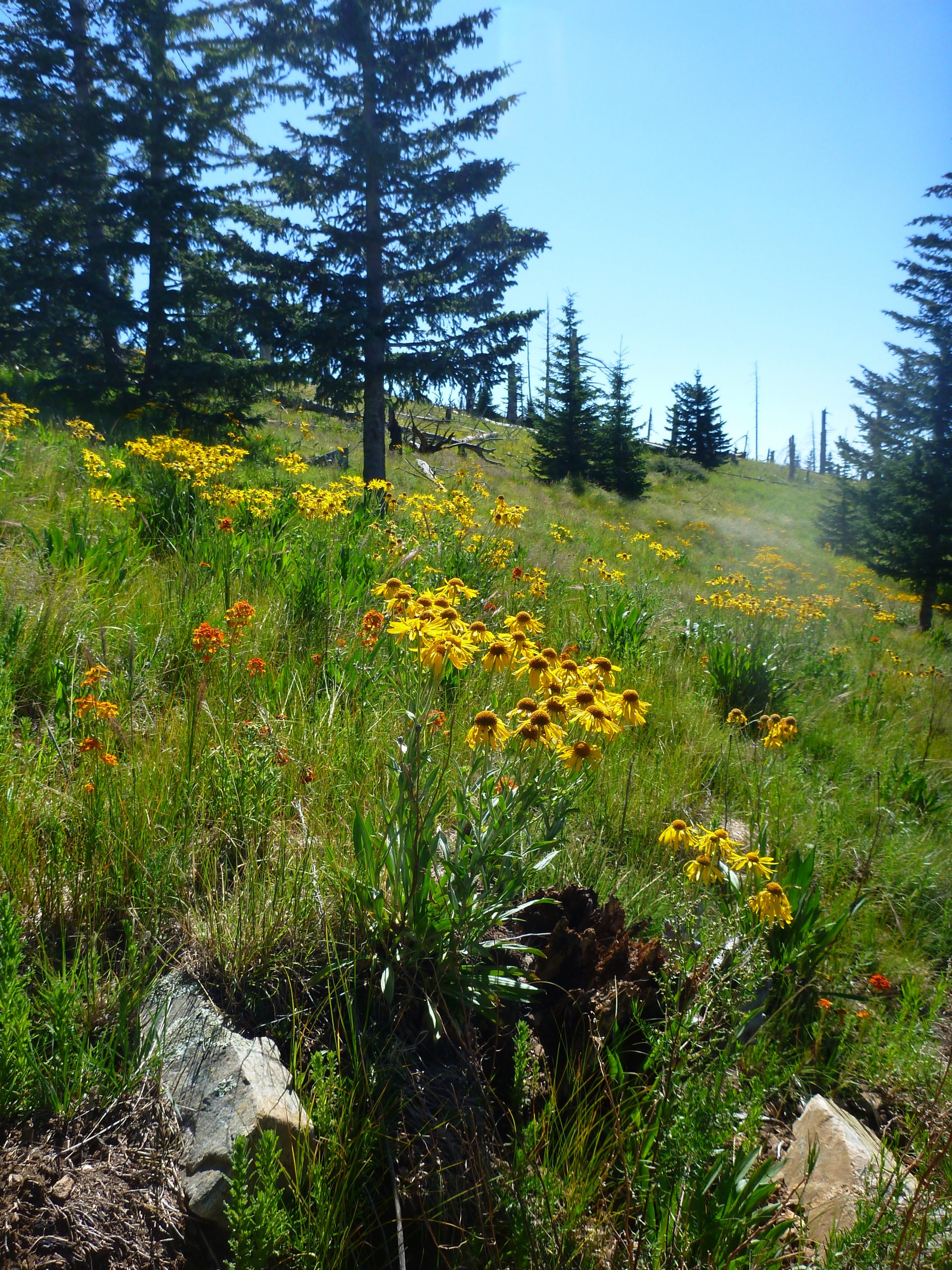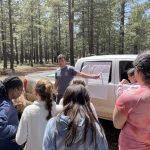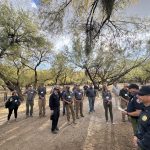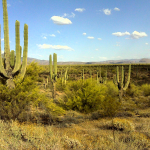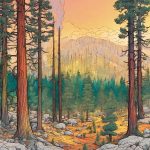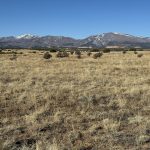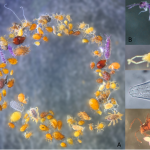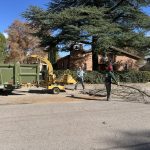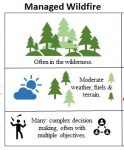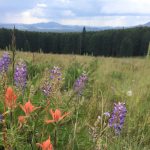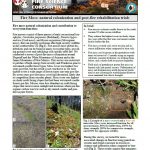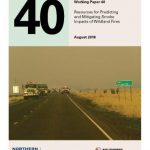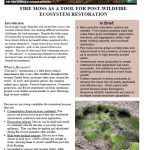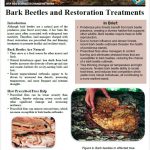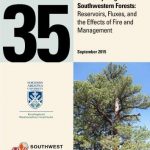Quick reference guides to wildfire science and southwestern fire stories.
Techniques for watershed resilience to wildland fire
Watersheds in the Southwest can be greatly impacted by wildfire events. This fact sheet provides a quick overview of the sections and materials in our May 2025 synthesis. Check it out and learn about nature-based solutions, case studies, and other resources that can help ameliorate post-fire flooding. Find the full working paper here.
Wildfire prevention best practices
Wildland fire prevention is underfunded despite its proven value. This fact sheet covers best practices of prevention education, engineering, enforcement, and administration.
Rethinking prevention science
Most wildfire prevention science is over thirty years old and as such needs to be updated to reflect today’s diverse recreationalist user groups. Read our fact sheet to learn more about what kind of studies are needed to connect with those who visit our wildlands.
Community discussion: Changing fire regimes in the Sonoran Desert
Scientists, land managers, and students gathered at the 4th Southwest Fire Ecology Conference to discuss the challenges posed by the alterations to the historic fire regime in the Sonoran Desert. This fact sheet summarizes the key insights and proposed solutions that emerged from these discussions, highlighting the urgent need for informed and adaptive fire management … Read more “Community discussion:…
How does understory vegetation respond to fuel treatments?
Recent research shows that fuel treatments can benefit the understory in southwestern forests. Grasses, wildflowers, and shrubs contribute to the overall health of a forest. What happens to these plants after thinning and prescribed fire? Read our fact sheet to find out!
Short Term Rental Packet
Short-term rentals like Airbnb and VRBO are increasing across the Southwest. While beneficial for local economies, many visitors are unaware of the state’s wildfire risks or how to stay informed. To address this, the Southwest Fire Science Consortium and the Arizona Wildfire Initiative created a wildfire information packet for short-term rentals. This customizable resource educates … Read more “Short Term…
Learning from New Mexico’s Largest Wildfire
Understand the takeaways derived from a panel of expert practitioners and thinkers during a special panel session titled: “Learning from the Hermit’s Peak Calf Canyon Wildfire, the largest fire in New Mexico: From erosion to reforestation and living in the continuum of wildfire cycles” held during the 4th Annual Southwest Fire Ecology Conference. This fact … Read more “Learning from…
Preparing for Wildfire
This is a summary of findings and themes that emerged in interviews with over 100 individuals across Arizona during in-depth community consultations. These insights will help community leaders be more strategic about using resources to improve wildfire adaptation in policy and practice.
Indigenous Knowledges and Sciences as Best Available Scientific Information
The wisdom contained within the broad scope of Indigenous Knowledges and Sciences (IKS) is accurate, reliable, and relevant and is therefore qualified as Best Available Scientific Information (BASI) that can be used by land managers and researchers. Scroll down to read the fact sheet below or download a PDF here.
Soil Microinvertebrates
Did you know that most multicellular animals in forests are tiny soil and litter dwelling invertebrates that are barely visible or invisible to the naked eye? We call these minute critters “microinvertebrates” (in contrast to “macroinvertebrates,” which are larger, more easily observable invertebrates like earthworms). Scroll down to read the fact sheet below or download … Read more “Soil Microinvertebrates”
How to Organize A Community Chipper Day
KEEPING COMMUNITIES RESILIENT TO WILDFIRE WITH NEIGHBORS HELPING NEIGHBORS. A chipper day typically involves residents removing vegetation around their home and having the removed material chipped to reduce the risk of wildfire to their home and community. Coordinating vegetation removal between residents and local groups or organizations helps to maximize the impact of this work … Read more “How to…
Fire in the Sonoran Desert
The expansion of the grass-fire cycle in the deserts of North America is driving ecosystem level transformation from patchy desert scrub to invasive grassland. A novel fire regime in the Sonoran Desert is forcing a new approach to land management. Unprecedented large-scale fires in recent years, especially in 2005 and 2020, have been driven by … Read more “Fire in…
Wildfire Ready Business Continuity Planning
How quickly a business can return after a fire depends on emergency planning done today. Business continuity planning involves looking at businesses from inside and out to determine the people, resources, and procedures that are absolutely essential to keep operations running. Creating a business continuity plan ensures that personnel and assets are protected and can … Read more “Wildfire Ready…
Using Wildfire Visualization for Mindful Communication
Visualizations like interactive maps, 3D videos, and virtual reality simulations are becoming popular tools for communicating with public and professional audiences about wildfire behavior and risk. Sharing information as visualizations requires careful consideration of how content might affect those who view it, particularly during and after wildfire events when the likelihood of causing or exacerbating … Read more “Using Wildfire…
New Employee Resources
Download a PDF of the Fact Sheet Here or scroll down to learn more. Related Content
How Do I Protect My Home From Wildfire?
Download a PDF of the Fact Sheet Here or scroll down to learn more. Resource links (from QR codes below) LINKTREE Home Assessment Checklist Related Content
Best Available Science Information (BASI) Fact Sheet
Download the PDF here or scroll down to learn more about Best Available Science Information (BASI).
Managed Fire Fact Sheet
Download a PDF of the fact sheet here and read the entire science synthesis report here.
Southwest Tribal Fire and Climate Resilience – 2023 Virtual Workshop
This is part of an ongoing effort to respect tribal sovereignty and treaty rights by supporting tribal use of fire as part of cultural and ecological resilience, and seeks to increase capacities, ameliorate challenges, and share examples that can guide tribes across the Southwest. In 2023, we gathered virtually to explore issues facing tribes relating … Read more “Southwest Tribal…
Fire Moss: Natural colonization and post-fire rehabilitation trials
Fire Moss: Natural colonization and post-fire rehabilitation trials by Henry Grover, Northern Arizona University
Resources for predicting and mitigating smoke impacts of wildland fires
Resources for predicting and mitigating smoke impacts of wildland fires PDF. Working Paper 40, August 2018, by Caleb Stotts, Pete Lahm, and Claudia Standish Factsheet also available here. Fact Sheet, August 2018, by Caleb Stotts, Pete Lahm, and Claudia Standish Fire managers use prescribed fire and some wildfires to meet resource management objectives, like restoring and maintaining … Read more “Resources for…
What is a forest fuel treatment?
Forest fuel treatments are used by managers for ecological restoration and reducing fire hazard. Due to past management decisions and long-term fire exclusion, forests are more dense and are susceptible to severe wildfires. Fuel treatments aim to reduce the intensity and size of wildfires, increase species diversity, and restore forests to their historical condition. Read … Read more “What is…
Fire moss as a tool for post-wildfire ecosystem restoration
This factsheet is a result of graduate research and has not been peer reviewed beyond graduate committee members. by Chris Ives Increasingly large, frequent, and severe fires across the western United States are creating difficult restoration challenges for land managers. Despite the wide use of current fire restoration techniques, many studies have shown little to … Read more “Fire moss…
Bark Beetles and Restoration Treatments
Although bark beetles are a natural part of the ponderosa pine forest ecosystem, it has been the insect most often associated with widespread tree mortality. Therefore, land managers charged with forest restoration use prescribed fire and thinning treatments to promote healthy and resilient stands. Read more!
Carbon Cycling in Southwestern Forests
The intent of this working paper is to explain the basics of the carbon cycle detailing how much carbon moves through vegetation, water, and soils over time. The paper also summarizes where current science suggests that carbon cycling patterns are most likely to change in the coming years to decades, and how management can influence … Read more “Carbon Cycling…
Estimating Surface Live Fuel Loading
View fact sheet. Written by Dr. Molly Hunter, February 2011
